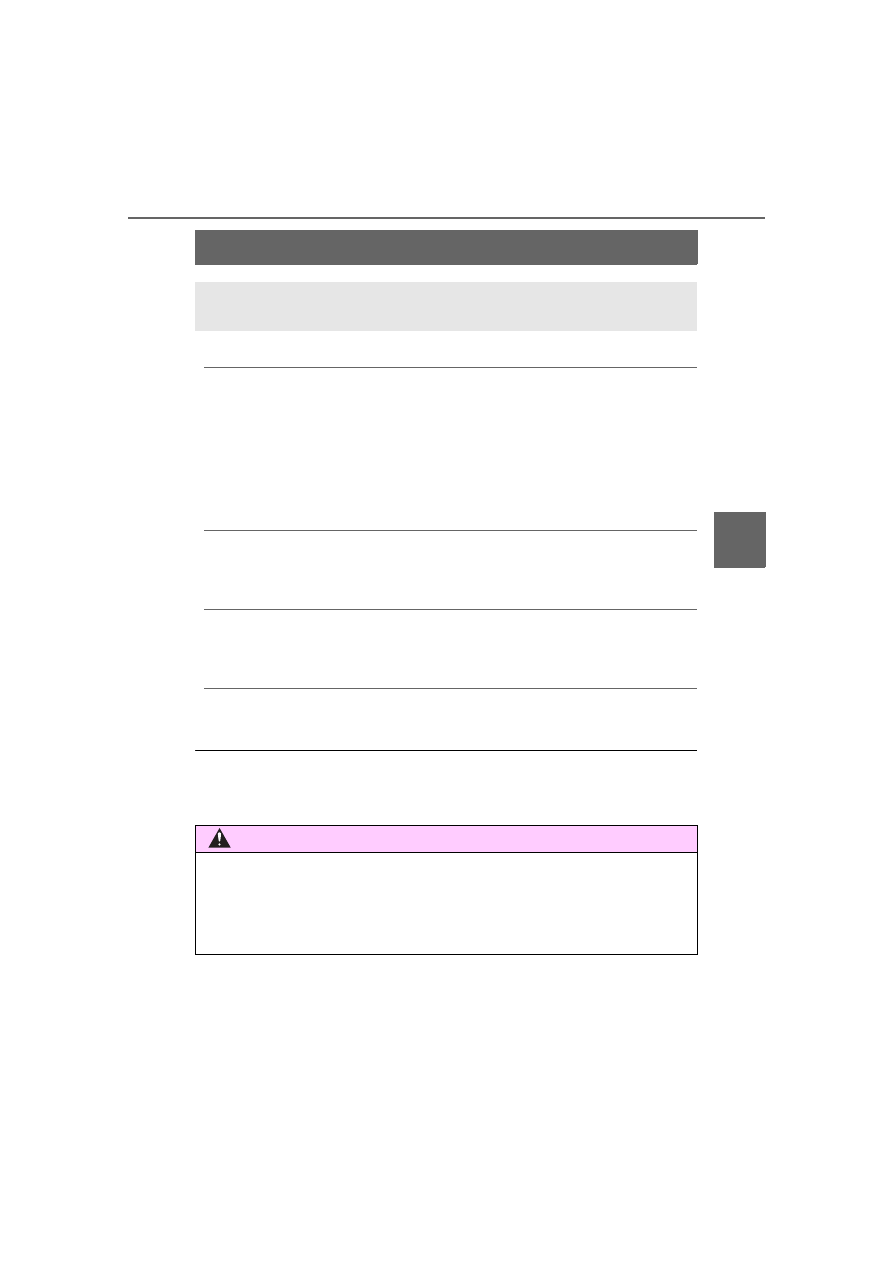Toyota Sequoia (2018 year). Instruction - part 12

177
4-1. Before driving
4
Drivin
SEQUOIA_OM_USA_OM0C011U
Vehicle load limits
◆
Total load capacity (vehicle capacity weight): (
Total load capacity means the combined weight of occupants, cargo
and luggage.
◆
Seating capacity
Vehicles with separated type second seats: 7 occupants
(Front 2, Rear 5)
Vehicles with bench type second seat: 8 occupants (Front 2,
Rear 6)
Seating capacity means the maximum number of occupants whose
estimated average weight is 150 lb. (68 kg) per person.
◆
TWR (Trailer Weight Rating): (
TWR means the maximum gross trailer weight (trailer weight plus
its cargo weight) that your vehicle is able to tow.
◆
Cargo capacity
Cargo capacity may increase or decrease depending on the weight
and the number of occupants.
■
Total load capacity and seating capacity
These details are also described on the tire and loading information label.
(
Vehicle load limits include total load capacity, seating capacity,
TWR (Trailer Weight Rating) and cargo capacity.
WARNING
■
Overloading the vehicle
Do not overload the vehicle.
It may not only cause damage to the tires, but also degrade steering
and braking ability, resulting in an accident.